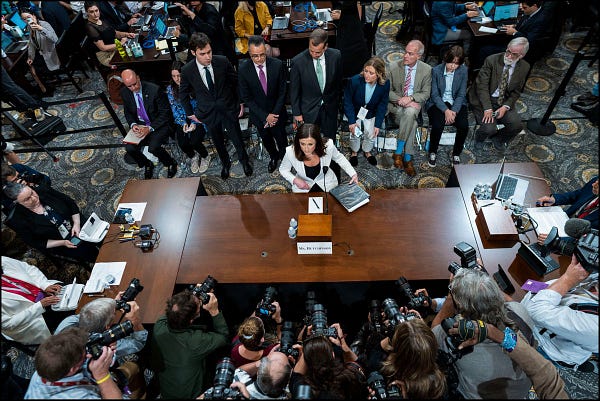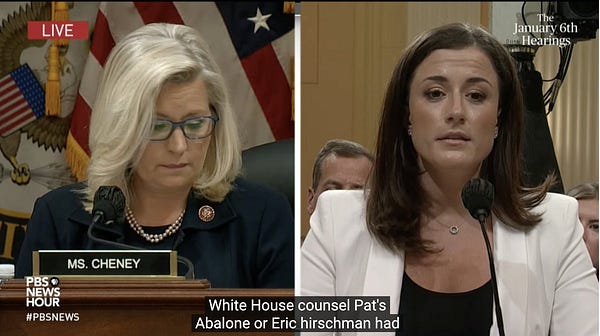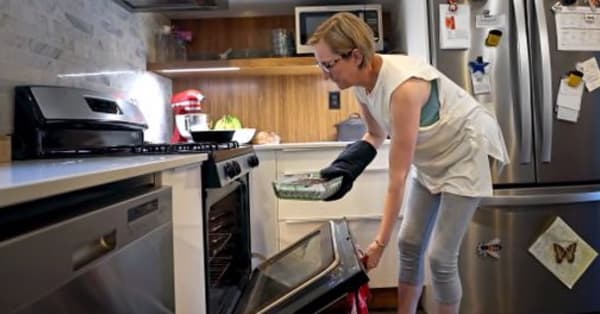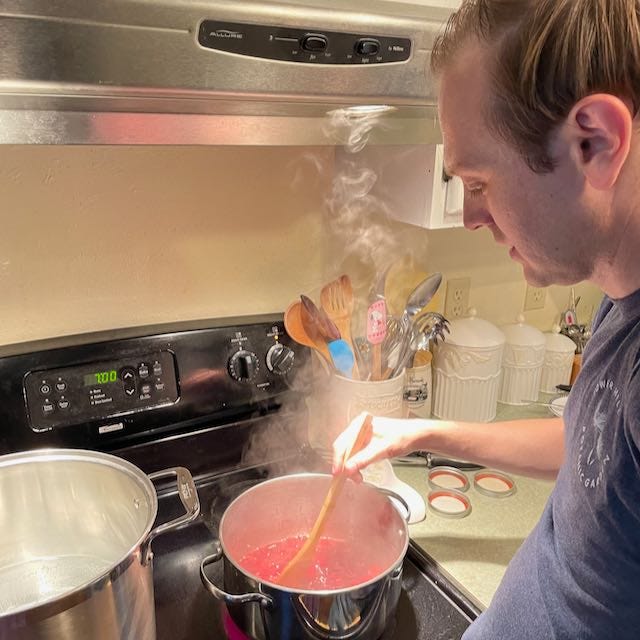Wednesday Walk: The Gaslight is Over
Welcome to another Wednesday Walk. This is a new format for me, but I’ve really enjoyed being able to share some thoughts with you all that are longer than a tweet but less formal than the Sunday newsletter. I hope you’re enjoying reading these too!
If you like what you’re reading, you can subscribe for free to have this newsletter delivered to your inbox:
American Hero


I was at an appointment during Cassidy Hutchinson’s testimony before the January 6 committee yesterday, but was trying to keep up with it via Twitter. Just the excerpts were mind blowing, but I ended up watching the replay of the hearing late yesterday and it is perhaps the most damning of any day of testimony yet.
I was struck with the bravery of Ms. Hutchinson for coming forward, telling her story, and exposing the truth. The pressure that she faced is unfathomable, and she is taking a major risk for her future career and personal safety by being so honest and forthright.
Doug Mills, the photographer for the New York Times captured the photo above, which I think will be one for the history books. It places Ms. Hutchinson at the center of the frame, the lynchpin of this story at the moment. The composition with photographers below her in frame and the audience above, really put all eyes on her. I discussed in Sunday’s essay how history is being written and rewritten as we live through it, and it’s photos like this that help a narrative stick.
On a lighter note, the great comedy writer Merrill Markoe (whom I interviewed back in 2020) shared an amazing thread from the hearing (click on the Tweet to open it and read the full thread- it’s worth exploring!) Closed captioning for live events was typically done by transcriptionists in real time, but AI software has started to take over. It misses some of the context or nuance of a human though.





The Hazards of Gas


I also wanted to share this article from Sabrina Shankman at the Boston Globe about gas stoves. She cites a study that was recently published in Environmental Science & Technology, which shows that gas stoves can emit toxic chemicals even when they’re not in use.
Research has long shown that gas stoves emit chemicals like nitrogen dioxide, carbon monoxide, and formaldehyde when they’re being used for cooking, but this is the first time that I’m hearing about the dangers of gas when it’s turned off (and when a vent fan is likely not running either, keeping more of those toxins inside). Building homes with better insulation and tighter windows also exacerbates this problem.
When we bought our house almost 14 years ago, it came with an electric range that I imagined swapping out almost immediately for gas. I ended up falling in love with my electric stovetop though, and now refuse to part with it. It’s easy to clean and provides really consistent heat when cooking (you’ll see a photo of it in the next section). If this stove ever dies, I would upgrade to a more efficient electric induction range, but I would never go back to gas.
Perhaps part of my old desire for gas was because of marketing agencies pushing the benefits of gas stoves. Most homeowners are indifferent to other appliances like furnaces or water heaters, but if they insist on a gas stove (because of clever marketing suggesting it makes you a better cook), they’re more likely to use that gas pipe for other gas appliances and the natural gas company sells you more gas.
Full Frontal with Samantha Bee covered the way that gas companies have worked with social media influencers and it’s really fascinating, but also a bit terrifying:
In a Jam
Finally, I’d like to end on a happier note. Strawberry season has mostly passed at our local farms, but I emailed one of my local farmers this week to see if he’d be willing to let me pick whatever was leftover in the field. He was planning to mow it down this week for a new crop and was happy to let me grab whatever I wanted.
I ended up picking a few quarts of strawberries that were still really high quality (but would probably be considered “seconds” by the farm). Some we froze for use later in the year, and others I turned into jam.
I first learned to make jam by watching my wife’s uncle in the Toronto area many years ago, and jam making has become a tradition in our family now too (hot pepper jelly is my speciality).
As I mentioned a few weeks back in the newsletter, we’ve been following a new diet, although I think of it more as a lifestyle. The Plant Paradox diet excludes sugar, which is the main ingredient in jam, so I’ve been wondering if I would hang up my apron this year. At my mother-in-law’s suggestion (also a jam maker), I tried using monkfruit as a substitute, and it came out quite well.
It’s been nice to find new alternatives to familiar foods and traditions, while also feeling much healthier overall. If you’re interested in learning more about the Plant Paradox diet, I also interviewed Dr. Steven Gundry about it on my podcast this spring.
If you enjoyed reading this piece, please consider signing up for a free subscription to this newsletter. I publish pieces twice a week that look at how entertainment, media, home, family, work, and so much more are evolving as we redefine our world.
Other Wednesday Walks
If you’d like to catch up on past episodes of the Quarantine Creatives podcast, they can be found on Apple Podcasts, Spotify, or wherever you listen.
Please consider sharing this with a friend that you think might enjoy it, or better yet, share it on social media so you can tell hundreds of friends!
If you’ve missed past issues of this newsletter, they are available to read here.
Stay Safe!
Heath





